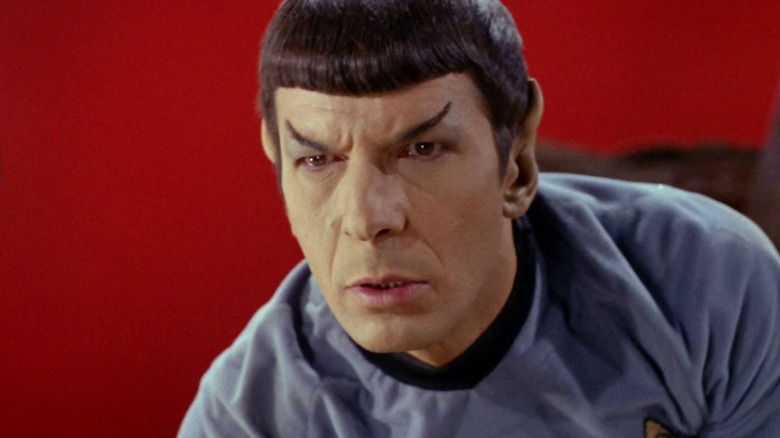NASA Reveals Devastating Star Trek Truth: Spock's Home Planet Isn't Real
Plenty of "Star Trek" gadgets may have gone from dream to reality in the years since the franchise began, but unfortunately, one of the show's creations just went from real life back to the realm of fiction. A new article from NASA has announced that a planet previously thought to be in the same place as beloved science officer Spock's homeworld of Vulcan is no more. In fact, thanks to some tricky science, it never actually was to begin with.
"Spock's Home Planet Goes 'Poof,'" the recent NASA release proclaims, though the truth is a bit more complicated than the planet blipping out of existence. According to the new study, the planet that was discovered six years ago orbiting the star 40 Eridani A was never actually there in the first place, and was simply the result of an "astronomical illusion." Scientists first reported spotting what seemed to be a planet 16 lightyears away back in 2018, but the development of more refined observation technology applied to "Vulcan" by astronomer Abigail Burrows led to a different finding. While scientists originally thought they may have been observing a "wobble" in the star indicating an object orbiting in a 42-day pattern around it, they now believe the movement may have come from what NASA calls "the flickering of something on the star's surface" –- likely bright spots or hotter and cooler layers of matter causing convection.
In short? A fun visual effect on a star's surface led scientists to misdiagnose it as a planet, but it's not, and we won't be finding any pointy-eared, Vulcan-saluting aliens anytime soon.
Plot twist: HD 26965 b (aka the 'real' Vulcan) was never a planet at all
The potential planet's placement caused a stir when it was first announced since it matched up pretty perfectly with a description of the placement of Vulcan established by franchise creator Gene Roddenberry. Back in 1991, Roddenberry teamed up with scientists to figure out where Vulcan would logically exist, and the team wrote a letter to Sky & Telescope Magazine positing that a planet near 40 Eridani A would be the perfect stand-in for Spock's homeland. They noted that some "Star Trek" books had put out conflicting information about the placement of Vulcan, but that 40 Eridani A would make the most sense as, due to its age, "an intelligent civilization could have evolved over the aeons on a planet circling 40 Eridani." They went on to call the star "the more likely Vulcan sun."
From that point on, the location of Vulcan was canonized in "Star Trek," appearing in the 2002 reference guide "Star Trek: Star Charts," getting a vague mention in an episode of "Star Trek: Enterprise," and even appearing on a map in an episode of "Star Trek: Discovery." Of course, the news that the real-life Vulcan (or HD 26965 b, as it was officially called) isn't a planet doesn't diminish the show's mythology at all: it's just one less fun fact for Trekkies to pull out at parties. The franchise's track record for predicting the future still remains unmatched, though. (Well, at least this side of "The Simpsons.") Vulcan may be a mirage, but modern marvels like tablets, smartphones, video chat, and translation apps were all a part of "Star Trek" lore before they were actually invented and became accessible as everyday gadgets.

